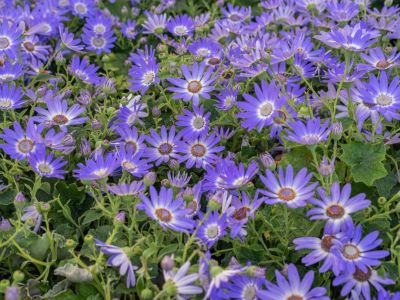Blue Daisy Flowers
Many of the daisy like hybrids feature vivid colors with a contrasting eye. Once only bright colors such as blue and purple were available, but now multiple colors are offered. They are easy to propagate from seed or cuttings. A favorite in the floral trade, blue daisy plants are forced to bloom in winter and early spring. Blue daisy flowers are often given as gifts that bloom through the winter. They can be hard to rebloom, so blue daisy plants are often discarded after the flowers fade. However, with the right care, they can move outdoors in spring and continue to bloom in cool but frost-free weather.
Growing Florist’s Cineraria: Learn About Blue Daisy Care
Blue daisy care includes attention to precise watering, neither too much nor too little. Soil should be kept moist, but very well-draining. Too much water can lead to root rot. Too little water will diminish flowering. Indoors, blue daisy needs bright, filtered light with ideal temperatures from 60 to 65 degrees F. (16-18 C.). It requires high humidity, but not by wetting the leaves. A pebble tray will increase the humidity around the plant as well as grouping several plants together. Fertilizer designed for blooming plants may be added following package instructions. Outside, cineraria blue daisy excels in a soil rich with organic matter in a part shady location. Blue daisy is perfect for a spring patio container. Plants typically reach about 1 foot tall by 1 to 2 feet wide (31 cm. tall by 31-61 cm. wide). Popular cultivars include ‘Cindy Mix,’ ‘Sonnet Mix,’ ‘Tourette Mix,’ and ‘Venus.’ Problems can include diseases such as powdery mildew, gray mold, fungal crown and root rots, rust, and viruses. Pests such as thrips, whiteflies, aphids, and mites can be bothersome.
